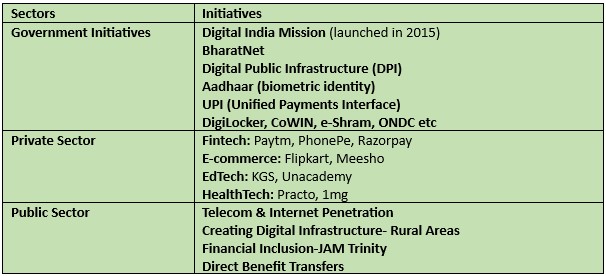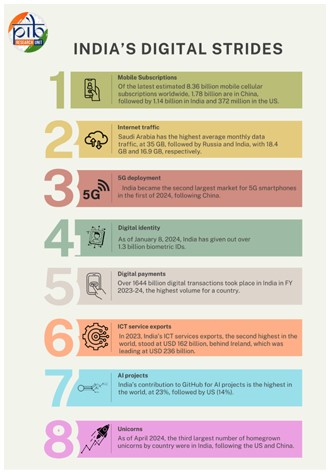Context: According to the recently released NCRB report for 2023, cybercrime has shown an increase of 31.2% in registration over 2022, with 68.9% of cybercrime cases registered during 2023 for the motive of fraud (59,526 out of 86,420 cases).
- The digital economy, which contributed 11.74% to the national income in 2022–23. By 2030, India’s digital economy is projected to contribute nearly one-fifth of the country’s overall economy.
India’s Digital Transformation led by:


- However, India’s digital economy can be considered as “Double Edge Sword” as while enhancing convenience and inclusion, it has also created a fertile ground for cybercrime.
- Fraudsters exploit system loopholes and human psychology, using tactics such as phishing, OTP/UPI frauds, identity theft, loan scams, and increasingly, digital arrests. These frauds rely less on hacking skills and more on manipulation of fear and trust.
- The current institutional approach is largely reactive — fraud is addressed only after complaints are filed.
- Artificial Intelligence (AI) and Machine Learning (ML) can shift this model to proactive prevention through the following methods:
- Personalised transaction profiles- AI can map each customer’s typical transaction size, frequency, timing, and risk category (for example, senior citizens, rural users, high-net-worth individuals).Customers can be grouped into clusters to generate targeted alerts for deviations from normal activity.
- Cross-institutional monitoring: An AI-enabled fraud intelligence and early detection network could enable real-time sharing of alerts across banks, payment systems, and telecom providers. If one bank identifies a suspicious account, others could be notified instantly, preventing fraudsters from exploiting institutional gaps.
- Empowering the cyber police: AI offers real-time detection and automated alerts for law enforcement, allowing swift action within the crucial 24-hour window. With global data-sharing and stronger international cooperation, AI can make cyber policing faster, more agile, and citizen-friendly.
- Strengthening accountability of banks: Banks must adopt AI-driven monitoring, plug KYC gaps, and explore Blockchain for secure, tamper-proof customer data management.
Way forward
- India must shift to a protection-first framework, where citizen safety and digital trust are central to financial stability.
- For Banks– Banks should strengthen KYC, audit mule accounts, and protect data. Blockchain ensures secure records, while AI monitoring and shared fraud intelligence are vital.
- For the cyber police- Speed, tools, and capability are key. 24/7 rapid-response units must act within the 24-hour window, supported by stronger cross-border cooperation to address globalised fraud.
- For People– Improve digital literacy with basic and advanced IT training, targeting rural areas.
- If pursued sincerely, these reforms can transform India’s digital economy from vulnerable to resilient, where technology and trust work together to protect every citizen.


